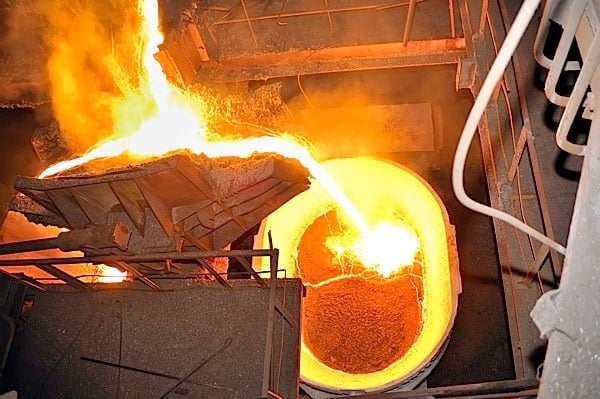Canadian manufacturing, especially in Ontario, returned to growth in May after three months of contraction, the RBC Canadian Manufacturing Purchasing Managers’ Index (PMI) reports. The Index rose from 49 to 49.8 in May, its highest level since January. Despite the positive headline, however, the story is a mixture of good and bad. Export orders stabilized, providing support for the sector, but overall volumes of new work continued to decrease. The lower Canadian dollar had a positive effect on exports, but falling spending in the energy sector had the opposite effect. The decrease in new work was only “marginal,” however, the least marked in four months. A modest increase in production levels was the main positive influence on the May index reading. Manufacturers boosted their output for export, helped by a favourable exchange rate, and production volumes grew.
RBC chief economist Craig Wright called the improvement in business conditions in May “encouraging,” though they were not enough to shift the sector into positive growth territory. “Moving into the second half of the year, we expect a strengthening US economy and a weakening in currency will fuel demand for Canada’s exports, which should have a positive effect on manufacturers,” he said.
It’s encouraging to see a slight improvement in business conditions for Canada’s manufacturing in May, even though significant improvements didn’t generate enough traction to shift the sector into positive growth territory. Moving into the second half of the year, we expect a strengthening U.S. economy and a weakening in currency will fuel demand for Canada’s exports, which should have a positive effect on manufacturers.
Some firms reported falling capital spending among clients in the energy sector, a fact that weighed on overall demand. The softer demand led to decreased stocks of finished goods and pre-production inventories, Costs of raw materials, especially steel, were reported to be higher by many manufacturers, though the overall rate of input cost inflation was the lowest since January. Input buying, meanwhile, dropped for the fourth consecutive month, but the decline in purchasing activity was reportedly marginal. The lower input buying reflected reduced workloads and efforts to streamline inventories.
Employment in the manufacturing sector was below the 50 value for the fifth consecutive month. A reading of 50 indicates no change. Companies that lowered their staffing levels did so in response to weaker client spending. The work backlogs index was also down for the sixth consecutive month, but the rate of contraction was less than in previous months.
Regionally, the deteriorating business conditions reported by the RBC PMI were largely confined to Alberta and British Columbia, where falls in output, new orders and employment were “sharp.” In the rest of the country, business conditions were stable, while in Ontario they improved “markedly.” Output in Ontario expanded at a “robust” pace, helped by the fastest rise in new export work in over four years.
The president and CEO of the Supply Chain Management Association, Cheryl Paradowski, said that the manufacturing sector downturn “is starting to reverse course” in Canada, with the latest survey indicating a modest rebound in production volumes and an overall stabilization in export sales. All regions except BC and Alberta recorded net job creation, and even in those two provinces the downturn was less marked than previously.

































